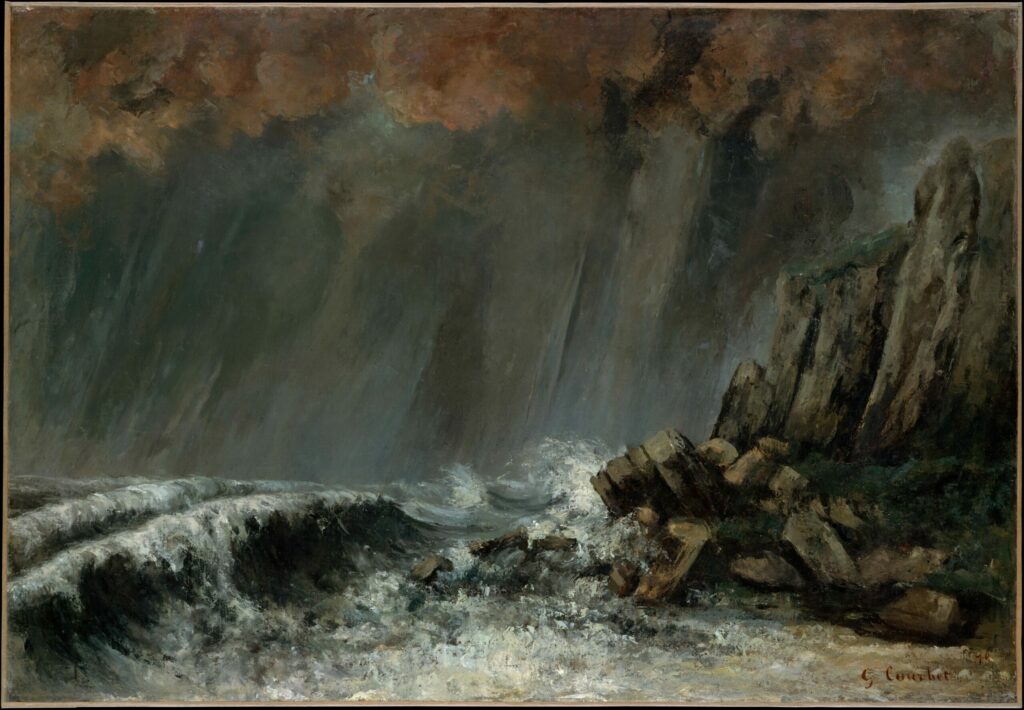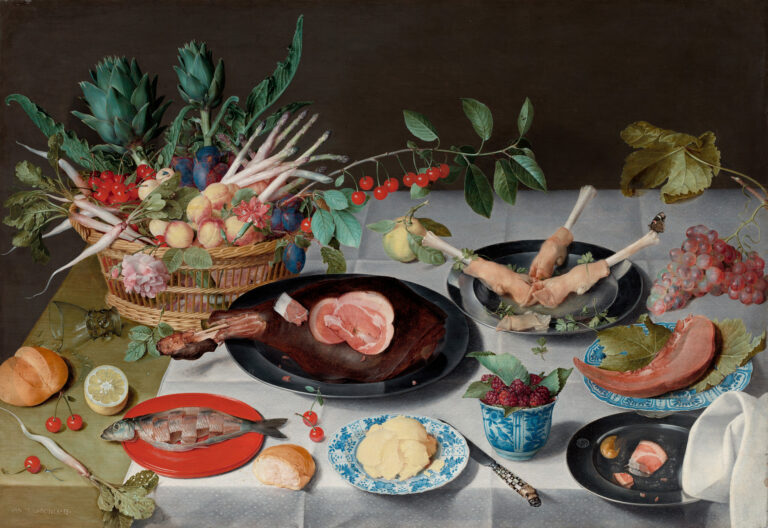
In this striking seascape, Courbet captures the raw power of the unleashed elements with exceptional dramatic intensity.
The tormented sky, with its coppery and greenish tones, pours torrential rain creating an atmospheric curtain of rare expressivity. The tumultuous waves, rendered in broad, impastoed brushstrokes, crash against the rocks of Étretat in a ballet of foamy whites and deep greens. The composition, structured by the diagonal of the monumental cliffs, accentuates the dramatic tension of the scene. Courbet’s technical mastery is particularly evident in his rendering of atmospheric effects and his treatment of pictorial matter, which give the work a striking modernity and an almost tactile force.
Another undated version of this waterspout is housed in the Musée des Beaux-Arts in Dijon.
Additional Information
- Title: Marine: The Waterspout
- Artist: Gustave Courbet (1819-1877)
- Date: 1870
- Dimensions: 27 1/8 x 39 1/4 in. (68.9 x 99.7 cm)
- Location: The Metropolitan Museum of Art, Fifth Avenue, New York, Gallery 812
- https://www.metmuseum.org/art/collection/search/436006
Gustave Courbet (1819-1877) is one of the major figures of 19th-century French Realism. A revolutionary painter in both technique and subject matter, he profoundly marked art history through his direct and uncompromising approach to reality.
His fascination with nature, particularly the sea and its spectacular phenomena, is fully expressed in his seascapes painted on the Normandy coast. In these works, he developed a bold technique, favoring the use of the palette knife and generous impasto that would significantly influence subsequent generations, notably the Impressionists.






